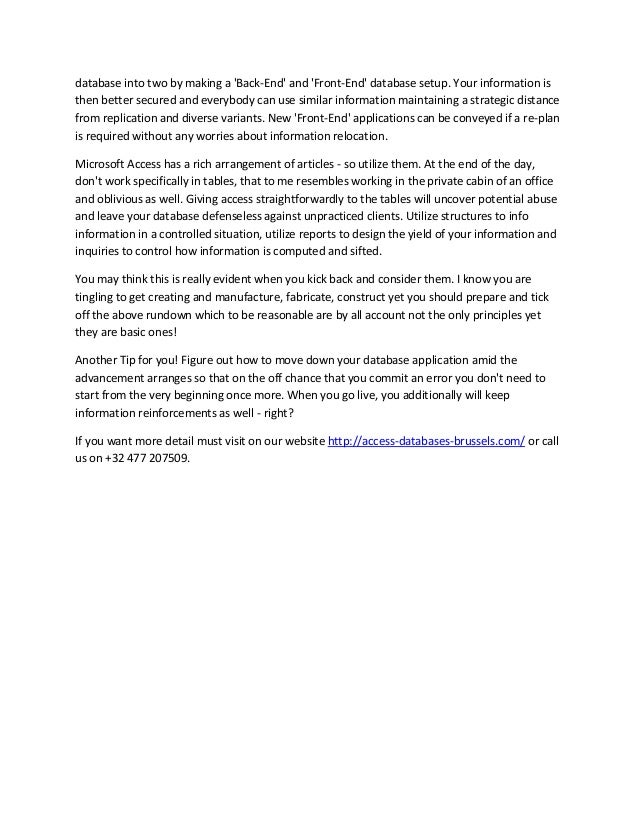
We can: Create a new Access database from scratch.The database design process can be very complicated. The more complex the system, the more sophisticated the tool is needed. Their functionality can vary greatly, however, core features include:Answer (1 of 5): the hold down the Shift key that most responders mention opens the database without executing any VBA code, or installing custom ribbons when loading the database.Designer for Microsoft Access helps you create Microsoft Access databases that are correctly normalized, without understanding the principles of relational database design.

Additionally, some of them allow the visual representation of data using ERD, makes it easier to visualize even more complex schemas.Without proper software, development is based on raw code. This increases the risk of errors at the initial stage. The tools allow users to edit the visual layout using simple drag-and-drop functions. With a user-friendly interface, browsing the structure is possible even for non-IT people.We have created a list of tools that support the process of creating database structure and its content.

Any help would be greatly appreciated.I'm not sure what 'interderminate' means either, actually :-)Something doesn't look quite right with what you have listed below the 3rd Normal Form section of your table structure. All patients with a specific medical condition.I have attempted to normalise so that I can produce tables in access and the relationships between them.Could someone tell me if I have done this right because when I tried to put this into access the relationships sometimes come up as interderminate (which I dont know what that means). All drugs allocated on a specific date, and in a specific month

Similarly your visit link table has a doctor ID but no patient ID. Scott has given a very good, detailed reply and you have plenty to do, I'm sure! I notice that you have tended not to carry forward the primary key from an entity when you are going to 2NF.As Scott identified, Prescription, for instance, has just an ID and does not refer to the patient receiving the prescription. You'll get far more from working through his book than the few dollar investment you make to buy it.Any other questions, don't hesitate to ask.Hi. What is its relationship? One Patient will have multiple prescriptions? One Prescription will have multiple patients?An extremely good book that I would highly recommend you buy off Amazon.com is Database Design for Mere Mortals 2nd Edition by Mike Hernandez.
Thinking of these as bi-directional relationships makes it less likely you will overlook carrying forward the primary keys of the many-to-many tables as foreign keys into the linking tables. A Patient can have many Doctor visits, and a Doctor can visit many Patients - so this is a many to many relationship which has to be resolved by use of a linking entity - Doctor Patient Visit would be one name for it. For example, Patient is treated by Doctor, Patient is prescribed Prescription, and so on.Explicitly defining the kind of relationship will help you recognise whether a relationship is one to one, one to many, or many to many.


 0 kommentar(er)
0 kommentar(er)
